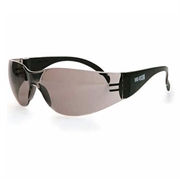
Personal Protective Equipment (PPE): Your Shield Against Workplace Hazards
In today's dynamic and diverse work environments, the safety and well-being of employees are paramount. Personal Protective Equipment (PPE) stands as a robust line of defense against the various hazards that workers face daily. This article delves into the significance of PPE, its role in ensuring workplace safety, and the importance of proper selection and usage.
The Importance of Personal Protective Equipment:
-
Mitigating Workplace Hazards: From construction sites and manufacturing plants to healthcare facilities and laboratories, each workplace carries its unique set of hazards. PPE is designed to mitigate these risks, providing a crucial layer of protection for employees.
-
Preventing Injuries and Illnesses: PPE safeguards workers from injuries, illnesses, and long-term health effects that can result from exposure to harmful elements, such as chemicals, biological agents, heat, noise, and physical hazards.
-
Safety Culture: The provision and proper use of PPE foster a culture of safety in the workplace. When employees see that their well-being is a priority, they are more likely to adhere to safety protocols and promote a safer working environment.
Types of Personal Protective Equipment:
PPE encompasses a wide range of protective gear, including but not limited to:
-
Head Protection: Hard hats and helmets safeguard against falling objects, impacts, and electrical hazards.
-
Eye and Face Protection: Safety glasses, goggles, and face shields protect against eye injuries and chemical splashes.
-
Hearing Protection: Earplugs and earmuffs mitigate noise-related hearing damage.
-
Respiratory Protection: Respirators filter out airborne contaminants, including dust, fumes, and pathogens.
-
Hand Protection: Gloves shield against cuts, chemicals, heat, and cold, depending on the type of gloves used.
-
Foot Protection: Safety shoes and boots safeguard against punctures, impacts, and electrical hazards.
-
Body Protection: Coveralls, vests, and aprons offer protection against chemical splashes, radiant heat, and other hazards.
Selecting and Using PPE:
Choosing the right PPE involves assessing workplace hazards, considering the nature of the job, and ensuring a proper fit. Training employees on the correct use, care, and maintenance of PPE is equally essential. Regular inspections and replacements of PPE items are critical to their effectiveness.
Conclusion:
Personal Protective Equipment is a cornerstone of workplace safety, offering a reliable defense against an array of hazards. By investing in and prioritizing PPE, employers not only protect their workforce but also cultivate a culture of safety that benefits everyone. It is a collective responsibility to ensure that PPE is readily available, correctly utilized, and routinely maintained to guarantee its effectiveness in safeguarding lives and health in the workplace.




















































